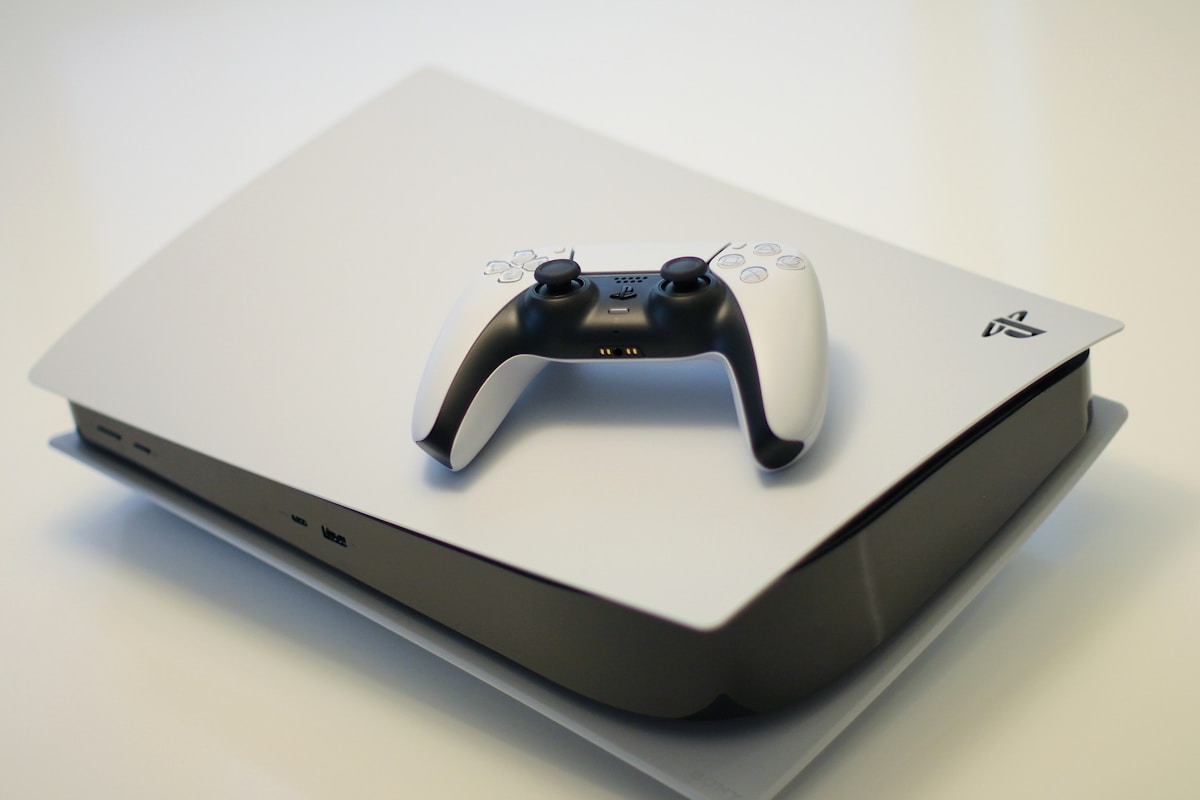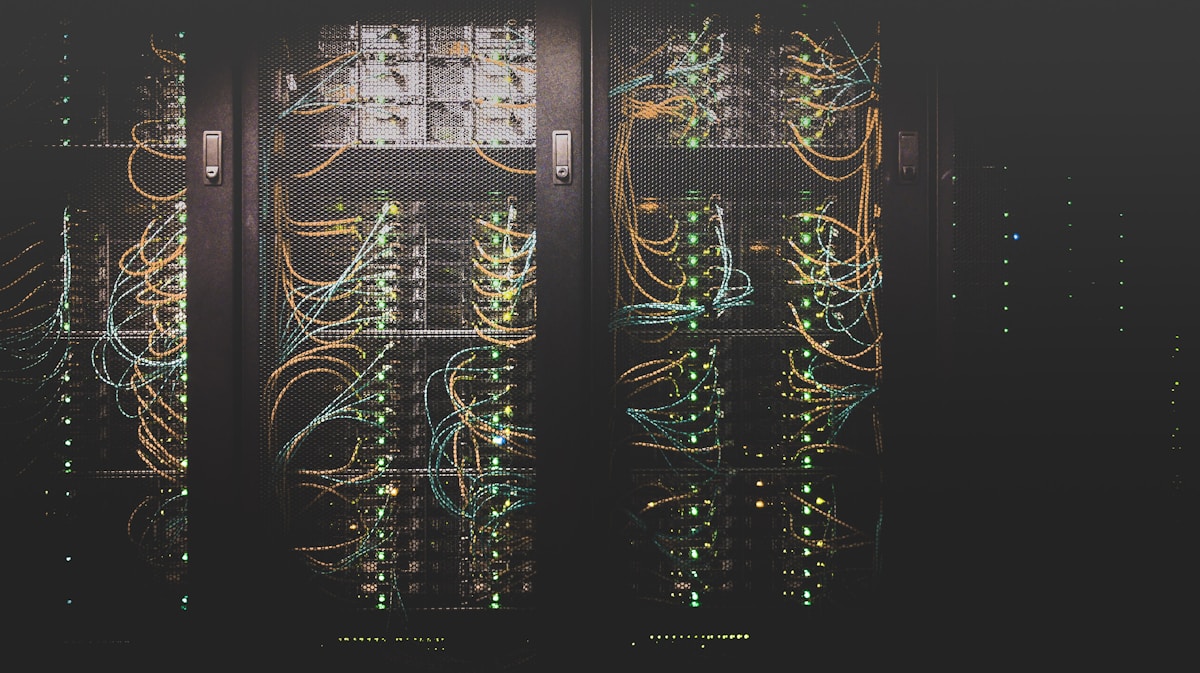Reliable hardware leaker Kepler_L2 stated October 9, 2025 on NeoGAF forums that PlayStation 6’s 2027 release is ‘not just on the table, it’s the plan unless any unexpected delays happen,’ confirming Sony’s concrete launch target rather than speculative possibility following recent Project Amethyst video where PS5 lead architect Mark Cerny and AMD Vice President David Huynh showcased three revolutionary technologies powering next-generation console hardware: Neural Arrays enabling GPU core clusters sharing data running larger real-time AI tools like upscalers and denoisers, Radiance Cores as next-generation ray tracing units with Neural Radiance Cache that Kepler claims feature ‘more features than even Blackwell’s current RT cores’ surpassing NVIDIA’s RTX 50XX series, and Universal Compression providing hardware-level compression/decompression for all datatypes beyond just textures creating effective bandwidth increases for higher detail and steadier framerates. The RDNA 5/UDNA architecture incorporating these features as standard gfx13 specifications targets TSMC’s N2 process node with A0 tapeout scheduled late 2025 enabling Sony’s typical 2-year development cadence from silicon fabrication to retail launch, positioning PS6 arriving seven years after PlayStation 5’s November 2020 debut maintaining historical generation lengths while Xbox Magnus similarly targets 2027 with comparable architectural upgrades creating simultaneous next-generation transition.
- Kepler_L2’s Definitive 2027 Confirmation
- Project Amethyst: Neural Arrays Explained
- Radiance Cores: Next-Gen Ray Tracing
- Universal Compression Technology
- RDNA 5 vs UDNA Nomenclature
- Dense Geometry Compression Format
- Xbox Magnus Receiving Similar Upgrades
- The 2-Year Fabrication Timeline
- TSMC N2 Process Node
- Community and Industry Reactions
- Frequently Asked Questions
- Conclusion
Kepler_L2’s Definitive 2027 Confirmation
When NeoGAF forum user suggested PS6 releasing 2027 ‘is on the table,’ Kepler_L2 replied emphatically: ‘Not just on the table, it’s the plan unless any unexpected delays happen’ according to The Game Post reporting. The distinction between possibility versus confirmed strategy represents significant clarification given months of speculation about whether Sony targets 2027 or delays until 2028 following PS5 Pro’s November 2024 launch potentially extending current generation lifecycle. Kepler_L2’s track record accurately leaking PlayStation 5 Pro specifications months before official reveal lends credibility to the assertion, though leaker’s caveat about ‘unexpected delays’ acknowledges manufacturing complexities and supply chain vulnerabilities that plagued PS5’s pandemic-era launch.
The confirmation aligns with Kepler_L2’s January 2025 revelation that PS6 SoC design reached completion entering pre-silicon validation with A0 tapeout scheduled late 2025, creating timeline where 2-year gap between fabrication and retail launch maintains Sony’s historical development cadence matching PS4 (2013) and PS5 (2020) preceding generations. Twisted Voxel reported the leaker’s statement strongly hinting next-gen console ‘is currently on track for a 2027 release’ barring unforeseen circumstances, with late 2027 specifically representing likely window given holiday shopping season’s commercial importance for console launches traditionally concentrating around November timeframes maximizing gift-buying momentum.
Project Amethyst: Neural Arrays Explained
Sony and AMD’s Project Amethyst video showcased Neural Arrays as first revolutionary technology enabling groups of GPU cores teaming up sharing data so they can run bigger, better AI tools like upscalers and denoisers in real time according to The Game Post’s breakdown. The architecture represents departure from traditional GPU designs where compute units operate independently, instead implementing workgroup clustering and global scratchpad sharing allowing collaborative processing of AI workloads requiring data exchange between multiple cores simultaneously. Kepler_L2 clarified Neural Arrays ‘are not analogous to NVIDIA’s Tensor Cores or Neural Shaders’ contrary to initial speculation, instead representing technologies present in NVIDIA’s datacenter GPUs but not yet consumer gaming hardware.
The distinction suggests Neural Arrays leverage existing GPU compute capabilities through architectural reorganization rather than dedicated fixed-function accelerators like Tensor Cores, potentially providing greater flexibility handling diverse AI workloads beyond matrix multiplication operations that Tensor Cores specialize in. The shared scratchpad memory allows efficient data movement between cores without repeatedly accessing slower main memory, crucial for real-time AI upscaling technologies like FSR 4 or hypothetical PlayStation equivalent requiring sub-frame latency preventing gameplay input lag. Whether Neural Arrays match dedicated AI accelerators’ raw throughput remains uncertain, though architectural efficiency potentially compensates for lower peak performance through reduced data movement overhead.
Radiance Cores: Next-Gen Ray Tracing
The Game Post described Radiance Cores as technology taking over heavy lifting for ray/path tracing, tracking millions of light rays so normal shader cores can focus on drawing scene creating cleaner reflections, shadows, and lighting without tanking performance. Twisted Voxel reported Kepler_L2 characterizing Radiance Cores as ‘effectively next-generation RT cores with a Neural Radiance Cache’ representing evolution beyond current PlayStation 5’s limited ray tracing capabilities that developers often disable maintaining 60fps targets. Most significantly, Kepler claimed Radiance Cores will feature ‘more features than even Blackwell’s current RT cores,’ referring to NVIDIA’s RTX 50XX series representing cutting-edge consumer graphics technology launching 2025.
The Neural Radiance Cache component presumably leverages machine learning caching previously-computed lighting information accelerating ray tracing calculations through intelligent interpolation rather than recalculating every light ray from scratch each frame. That approach mirrors NVIDIA’s ReSTIR techniques combining spatial and temporal reuse with denoising creating photorealistic lighting at acceptable performance costs, with Sony/AMD potentially implementing similar strategies through hardware acceleration making ray tracing practical for 60fps console gaming rather than graphical showcase mode compromising responsiveness. However, Kepler noted performance relative to NVIDIA’s future Rubin architecture ‘remains to be seen,’ acknowledging uncertainty whether AMD matches NVIDIA’s multi-generation ray tracing advantage accumulated since RTX 20XX series introduced hardware acceleration 2018.
Universal Compression Technology
Universal Compression represents third pillar squeezing all kinds of data—not just textures—before going to memory, effectively giving ‘more bandwidth’ pushing higher detail and steadier framerates with less waste according to The Game Post. Kepler_L2 clarified this differs fundamentally from NVIDIA’s Neural Texture Compression, instead representing ‘hardware-level compression and decompression system for every datatype, not just color data’ according to Twisted Voxel reporting. The comprehensive approach compressing geometry, audio, animation data, and arbitrary game assets beyond traditional texture-focused compression creates multiplicative bandwidth savings when all data streams benefit simultaneously rather than isolated texture subsystem improvements.
The bandwidth advantage proves crucial for next-generation consoles where memory costs prohibit doubling GDDR capacity each generation, instead requiring extracting maximum efficiency from existing bandwidth through lossless compression making 192-bit bus perform like hypothetical 256-bit configuration without expensive additional memory chips. PlayStation 5’s existing Kraken compression already demonstrated effectiveness reducing game install sizes and accelerating load times, with Universal Compression representing hardware evolution making compression/decompression essentially free from performance perspective compared to software-based approaches consuming CPU cycles. Kepler confirmed Universal Compression represents standard gfx13/RDNA 5 feature rather than PlayStation-exclusive customization, meaning PC graphics cards sharing architecture benefit identically.
RDNA 5 vs UDNA Nomenclature
Kepler_L2 noted the graphics architecture previously called RDNA 5 now being referred to as UDNA according to Reddit discussions, representing potential branding shift as AMD consolidates consumer gaming (RDNA) and datacenter compute (CDNA) architectures into unified design serving both markets. The consolidation mirrors NVIDIA’s approach where same underlying architecture powers GeForce gaming cards and datacenter accelerators with different configurations optimizing for distinct workloads, allowing AMD amortizing development costs across broader product portfolio while ensuring gaming-focused features like ray tracing benefit from datacenter innovations in AI and compute efficiency.
The naming ambiguity creates uncertainty whether PS6’s GPU represents true RDNA 5 generation or transitional hybrid incorporating UDNA elements, with architectural details remaining speculative until AMD officially announces consumer graphics cards revealing concrete specifications beyond high-level Project Amethyst concepts. Regardless of nomenclature, the gfx13 designation confirms generational progression from current RDNA 3’s gfx11 architecture powering PlayStation 5 Pro, with two-generation leap suggesting substantial performance improvements beyond mere clockspeed increases or compute unit count expansions that defined mid-generation Pro refreshes.
Dense Geometry Compression Format
Kepler_L2 clarified Project Amethyst’s discussion about ‘flexible and efficient data structures for geometry being ray-traced’ referred specifically to Dense Geometry Compression Format (DGF) according to Twisted Voxel, a technique optimizing ray tracing performance and memory bandwidth usage. The geometry compression proves essential for ray tracing where millions of intersection tests against complex 3D meshes create memory bottlenecks, with efficient spatial data structures like bounding volume hierarchies (BVH) determining whether ray tracing remains computationally tractable or degenerates into unusable slideshow framerates regardless of raw GPU horsepower.
The DGF implementation potentially represents hardware-accelerated BVH construction and traversal reducing CPU overhead that currently limits ray tracing adoption in open-world games featuring dynamic geometry constantly requiring BVH rebuilds. If DGF successfully offloads geometry management to dedicated fixed-function units, developers gain flexibility enabling full ray tracing in genres previously limited to hybrid rasterization approaches combining traditional rendering with selective ray-traced effects like reflections or shadows rather than comprehensive path tracing simulating all light transport physically.
Xbox Magnus Receiving Similar Upgrades
When asked whether upcoming Xbox system codenamed Magnus receives similar architectural upgrades, Kepler_L2 simply replied ‘Of course’ according to Twisted Voxel, confirming Microsoft’s next-generation console benefits from same AMD innovations showcased in Project Amethyst rather than Sony securing exclusive features fragmenting PC gaming ecosystem. The parity makes sense given both consoles leverage semi-custom AMD silicon sharing foundational architecture while incorporating platform-specific customizations optimizing for respective operating systems and development tools, with Neural Arrays, Radiance Cores, and Universal Compression representing baseline RDNA 5/UDNA features that PC graphics cards similarly implement.
The confirmation validates recent Xbox Magnus leaks specifying 68 RDNA 5 compute units suggesting Microsoft’s console shares architectural generation with PS6 despite potentially different CU counts, memory configurations, and clock speeds creating performance differentiation. The simultaneous 2027 launch window for both next-generation consoles creates traditional generational transition where PlayStation and Xbox compete on relatively equal footing unlike current generation’s staggered launches and supply constraints preventing fair market comparisons between platforms, potentially resetting competitive dynamics after PS5’s substantial sales advantage over Xbox Series consoles throughout Generation 9.
The 2-Year Fabrication Timeline
Kepler_L2’s January 2025 revelation that PS6 A0 tapeout scheduled late 2025 creates clean 2-year development window aligning with late 2027 retail launch, matching Sony’s historical cadence according to Tom’s Guide analysis. The A0 tapeout represents first physical silicon fabrication allowing engineers validating design functionality identifying bugs requiring subsequent revisions before mass production-ready B0 or C0 steppings emerge months later. The Game Post noted Sony’s rigid rollout with PS4 arriving seven years after PS3 (2006-2013) and PS5 dropping seven years after PS4 (2013-2020), suggesting 2027 maintains that rhythm despite PS5 Pro’s 2024 mid-generation refresh potentially extending lifecycle.
However, Space4Games reported conflicting information suggesting 2028 or even 2029 release based on August 2025 insider reports claiming PS5 Pro upgrade planned 2026 extending current generation, creating uncertainty whether Kepler_L2’s 2027 target represents firm commitment or optimistic scenario assuming flawless execution. The discrepancy highlights challenges forecasting console launches years in advance given manufacturing complexities, supply chain vulnerabilities, and competitive dynamics potentially forcing Sony delaying if Xbox Magnus faces setbacks creating opportunity capturing additional market share maintaining PlayStation 5 momentum rather than rushing next-generation transition.
TSMC N2 Process Node
Kepler indicated ‘some components’ manufactured on TSMC’s N2 node according to Reddit discussions, though specific node allocation between GPU chiplet and SoC components remains ambiguous. The N2 process represents TSMC’s cutting-edge 2-nanometer technology offering substantial power efficiency and transistor density improvements over N3 node powering current Apple Silicon and some PC components, with N2 production ramping 2025-2026 timeframe creating viable manufacturing window for late 2027 console launch. However, Tom’s Guide noted uncertainty whether design ultimately uses N3-class or N2 processes, with conservative N3 approach reducing costs and improving yields versus aggressive N2 providing performance advantages justifying premium positioning.
The process node decision critically impacts console pricing with 2nm fabrication costing significantly more per wafer than mature 3nm processes, potentially forcing Sony choosing between affordable mainstream console on N3 versus expensive enthusiast hardware on N2 accepting narrower addressable market. Recent PS5 Pro’s $700 pricing demonstrating consumer resistance to premium console costs might push Sony toward conservative N3 maximizing accessibility, though competitive pressure from high-end Xbox Magnus potentially forces matching advanced process technology preventing substantial performance disadvantages that marketing struggles overcoming regardless of exclusive games libraries.
Community and Industry Reactions
The Reddit r/GamingLeaksAndRumours thread received 395 upvotes with 318 comments debating whether 2027 represents realistic target or optimistic projection vulnerable to delays plaguing semiconductor industry. Some commenters expressed skepticism about Sony maintaining aggressive timeline given PS5 Pro’s 2024 launch suggesting current generation extension, while others noted Mark Cerny’s Project Amethyst involvement signals serious next-generation planning rather than vaporware speculation. The Neural Arrays and Radiance Cores technical details generated excitement among hardware enthusiasts anticipating substantial generational improvements beyond iterative Pro refresh, though pricing concerns dominated discussions given PS5 Pro’s $700 MSRP creating precedent for $800-1000 next-generation consoles potentially limiting mainstream adoption.
Piunikaweb characterized Project Amethyst as ‘game-changing AI and Ray Tracing tech’ positioning PS6 as transformative rather than incremental upgrade, while Twisted Voxel emphasized Radiance Cores surpassing NVIDIA Blackwell features suggesting AMD achieving technical parity or superiority reversing current generation’s ray tracing disadvantage where PlayStation 5 lags behind Xbox Series X and PC graphics cards. Whether marketing promises translate into practical gaming improvements or represent theoretical advantages rarely utilized by developers optimizing for lowest common denominator specifications determines if Neural Arrays and Radiance Cores meaningfully impact player experiences versus remaining underutilized silicon like current-generation hardware ray tracing that many titles disable maintaining performance targets.
Frequently Asked Questions
When is PlayStation 6 releasing?
Kepler_L2 confirms PS6 release is ‘locked for 2027, not just on the table, it’s the plan unless any unexpected delays happen.’ Late 2027 specifically seems likely given Sony’s historical November launch windows and 2-year timeline from late 2025 A0 tapeout.
What is Project Amethyst?
Project Amethyst is collaboration video between Sony’s Mark Cerny and AMD showcasing three next-gen technologies: Neural Arrays for AI workloads, Radiance Cores for advanced ray tracing, and Universal Compression for all data types—features standard in RDNA 5/UDNA architecture.
What are Radiance Cores?
Radiance Cores are next-generation ray tracing units with Neural Radiance Cache that Kepler_L2 claims feature ‘more features than even Blackwell’s current RT cores,’ suggesting PS6’s ray tracing capabilities will surpass NVIDIA’s RTX 50XX series GPUs.
What are Neural Arrays in PS6?
Neural Arrays enable GPU core clusters sharing data running larger real-time AI tools like upscalers and denoisers. Unlike NVIDIA Tensor Cores, they use workgroup clustering and global scratchpad sharing found in datacenter GPUs but not consumer gaming hardware.
Will Xbox get same features as PS6?
Yes, Kepler_L2 confirmed Xbox Magnus receives similar architectural upgrades including Neural Arrays, Radiance Cores, and Universal Compression as standard RDNA 5/UDNA features rather than PlayStation-exclusive customizations.
What process node is PS6 using?
Kepler indicated ‘some components’ manufactured on TSMC’s N2 (2-nanometer) process, though uncertainty remains whether final design uses N3-class or N2 with different components potentially fabbed on different nodes optimizing cost versus performance.
How much will PlayStation 6 cost?
Unknown officially, though analysts speculate $600-900 depending on process node and component choices. PS5 Pro’s $700 pricing provides baseline, with advanced N2 manufacturing potentially pushing costs higher unless Sony prioritizes mainstream accessibility over cutting-edge performance.
Conclusion
Kepler_L2’s October 9, 2025 confirmation that PlayStation 6’s 2027 release represents ‘not just on the table, it’s the plan unless any unexpected delays happen’ provides definitive timeline following Project Amethyst showcase revealing Sony and AMD’s revolutionary next-generation technologies including Neural Arrays enabling collaborative GPU computing for real-time AI upscaling beyond NVIDIA Tensor Core approaches, Radiance Cores featuring more ray tracing capabilities than Blackwell RTX 50XX series through Neural Radiance Cache acceleration, and Universal Compression providing hardware-level bandwidth multiplication for all datatypes as standard RDNA 5/UDNA gfx13 features benefiting PlayStation 6, Xbox Magnus, and PC graphics cards simultaneously launching 2027. The ambitious architectural innovations targeting TSMC’s cutting-edge N2 process node with A0 tapeout scheduled late 2025 maintaining Sony’s historical 2-year fabrication-to-retail cadence positions PS6 arriving seven years after PlayStation 5’s November 2020 launch matching traditional generation lengths, though conflicting August 2025 insider reports suggesting 2028-2029 delays tied to PS5 Pro lifecycle extension create uncertainty whether Kepler’s optimistic timeline survives manufacturing complexities, supply chain vulnerabilities, and competitive dynamics potentially forcing strategic delays if Xbox Magnus faces setbacks creating market share opportunity Sony might exploit maintaining current generation momentum rather than rushing next-generation transition prematurely before achieving maximum PlayStation 5 install base saturation justifying expensive developer transitions abandoning 150+ million potential customers for unproven platforms.




